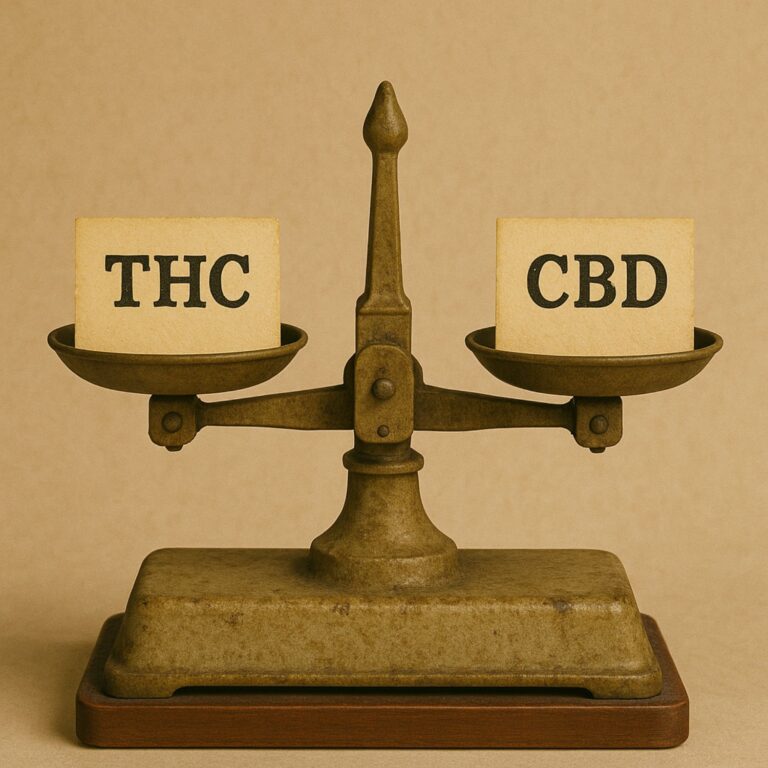Cannabis contains over 550 chemical compounds, all working in distinct ways. Clearly, it’s complex. When it comes to using cannabis, understanding the entourage effect is key to getting the most out of your experience.
But what is the entourage effect?
The entourage effect refers to the theory that when the compounds in cannabis, like tetrahydrocannabinol (THC) and Cannabidiol (CBD), are used together, they can produce a more significant effect than the individual compounds on their own.
By grasping the concept of this complex team-up, you’ll be able to better understand how cannabis products will work best for your desired needs — making sure that every use delivers maximum benefits.
The entourage effect explained
The entourage effect is a fascinating theory that has a wide range of implications when it comes to enjoyable cannabis use. Understanding the different compounds in cannabis and how they interact with each other can help you make more informed decisions about using cannabis for medical or recreational purposes.
How cannabis components affect each other
Some studies have shown that CBD appears to lessen some of the potential negative side effects of THC, like anxiety, sedation, and hunger. It can also increase the benefits of THC, like its pain-relieving effects.
Additionally, some cannabis users claim that using CBD can offset the overconsumption of THC, although this is anecdotal data.
Other research has shown that THC can increase the effectiveness of CBD as well. And while both CBD and THC have been shown to be anti-inflammatory, they seem to work even better when combined.
The therapeutic value of cannabis compounds
Each cannabis compound has its own benefits and usefulness. Many of these components are being used today for a variety of treatments, not just for recreational purposes.
For example, the phytocannabinoid compounds in cannabis, which include THC and CBD, have been found to have therapeutic value for a wide range of medical conditions.
THC has been shown to have a lot of therapeutic value, even having two Food and Drug Administration (FDA) approved treatments that treat chemotherapy-induced nausea and stimulate appetite in people with conditions like anorexia and AIDS. Studies have also shown the benefits of THC for treating sleep apnea, fibromyalgia, and pain.
CBD, on the other hand, has been found in some studies to be useful as a treatment for conditions like Parkinson’s disease, schizophrenia, multiple sclerosis, diabetes, and anxiety. There is even an FDA-approved CBD product to treat two forms of epilepsy.
Terpenes, which are aromatic compounds found in cannabis, also play a role in the entourage effect and have therapeutic properties of their own. In a study on mice, researchers found that some terpenes, such as linalool and geraniol, had pain-relieving effects.
Flavonoids, another ingredient in cannabis, have been shown to have therapeutic value by being an antioxidant, anti-inflammatory, antiviral, and even anti-cancer.
All these components can work together to achieve a great cannabis experience for you, as the entourage effect currently has a lot of support.
Can CBD still work on its own?
While the entourage effect has support, CBD is still both useful on its own and can provide a range of benefits. For example, CBD oil is a common anti-inflammatory product used that doesn’t contain THC. Because of their individual benefits, they have both gained popularity for being used as treatments for certain medical and psychological conditions.
What CBD-THC ratio you should use
When it comes to choosing the right CBD-THC ratio, there is no one-size-fits-all approach. The ratio of CBD to THC can significantly affect the way cannabis affects the body, so it’s a good idea to understand how these ratios work and which one will work best for your individual needs. There are several factors that need to be taken into consideration when making this decision.
Know your preference and tolerance level
One of the most important factors for finding the right CBD-THC ratio for you is knowing your preferences and tolerance. Everyone’s body chemistry, experience, and preferences are different, so what works for one person may not work for another. Some people may prefer higher levels of THC for psychoactive effects, while others may prefer lower levels of THC for a more therapeutic effect without the well-known psychoactive high.
It’s also important to consider your tolerance level, as individuals with a lower tolerance may experience more intense effects from higher THC ratios.
Know your goals
Another factor to consider when choosing a CBD-THC ratio is knowing your goals. Different ratios can provide different benefits, so determine if you are using cannabis to alleviate pain, anxiety, or another specific condition, or if you are using it for recreational purposes. These goals can help you decide if higher levels of CBD or THC or a 50:50 split is right for you.
Speak to a professional
Speaking with a professional can also be helpful when choosing the right CBD-THC ratio. A healthcare provider or cannabis specialist can help you determine the right ratio based on your individual needs, desires, and medical history. They can also help you determine the appropriate dosage and method of consumption. In some instances, they may even prescribe you medications that contain THC or CBD.
Experiment safely
When choosing a CBD-THC ratio, it’s important to keep in mind that everyone’s experience with cannabis is different. It may take some trial and error, albeit safely and with professional advice, to find the right ratio and dosage for your individual needs. It’s also important to start with a low dose and work your way up slowly, especially if you’re new to cannabis or have a low tolerance. By taking these factors into consideration and working with a professional, you can find the right CBD-THC ratio for your needs and achieve the desired effects.
Finding a happy synergy
The entourage effect theory is an important concept for cannabis users to understand. By working together synergistically, the various compounds in cannabis can enhance each other’s therapeutic effects and diminish drawbacks, potentially providing more comprehensive relief for a wide range of desired outcomes. Finding the right uses for our individual desires can help us have a more enjoyable, beneficial experience with cannabis. If you want more helpful information on cannabis products or ingredients, read more of our DDM Cannabis articles.


